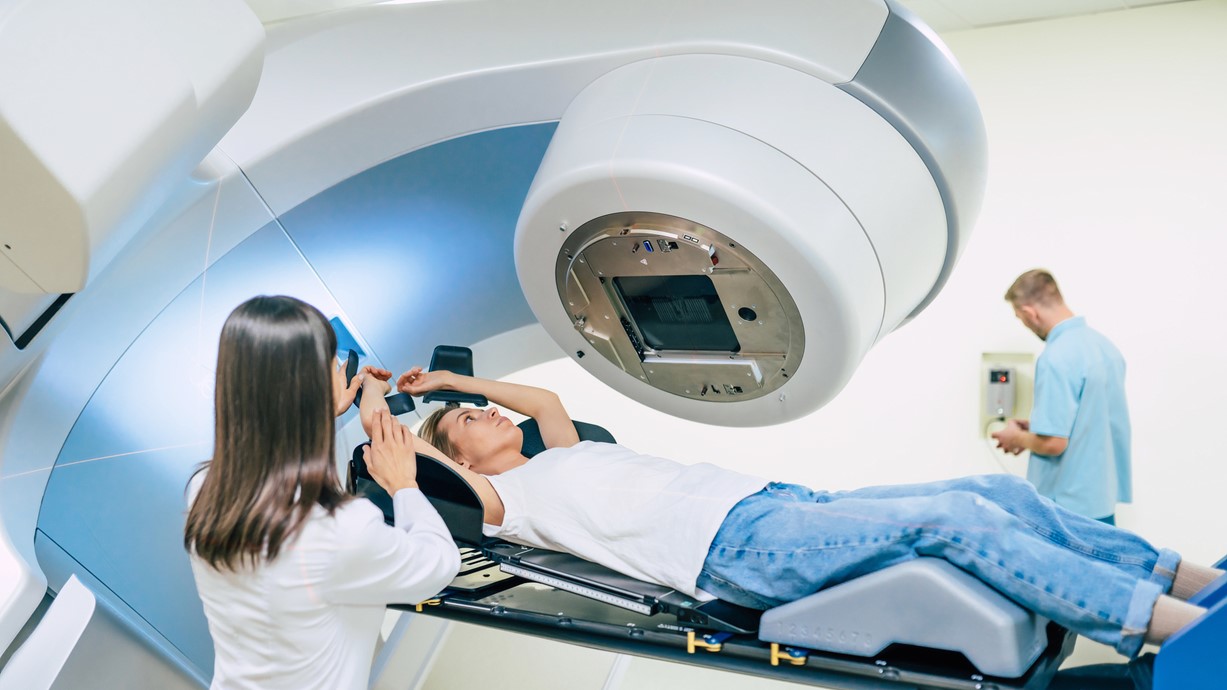
A new study led by Oxford University and involving Swansea University has found that the treatment of cancer in twelve former Soviet Union countries is being impacted by shortages and inconsistencies in equipment and staff.
The ART (Access to Radiotherapy Technologies) study, published in The Lancet Oncology, has highlighted crucial gaps in access to diagnostic imaging and radiotherapy technologies (RT) in a region made up of the Baltics, Eastern Europe, Central Asia, and the Caucasus.
By addressing these gaps, healthcare services can increase their ability to rapidly diagnose and effectively treat cancer patients, ultimately improving patient survival rates.
The former Soviet Union region is ranked second highest in the world for the number of radiotherapy cancer treatments delivered mainly with ‘outdated’ cobalt-60 machines.
To date, there has been a lack of understanding about the obstacles preventing the shift to more effective linear accelerators (LINACs) for external beam radiation therapy (EBRT).
LINACs are more precise and effective than cobalt-60 machines; they are also safer as they do not use radioactive materials. However, these devices rely on skilled staff and regular maintenance, meaning healthcare providers are required to make a significant investment in infrastructure and training.
Through national cancer data and a combination of surveys and workshops with cancer specialists and regulators, the research team identified the challenges these countries face and how suitable funding could improve their radiotherapy technologies and other cancer-related services.
Although the characteristics of the countries vary significantly in terms of total population, gross domestic product (GDP) per capita, cancer incidence, and mortality-to-incidence ratio (MIR), there are several key trends:
- In general, more economically developed countries, such as Estonia, Latvia, and Lithuania, have greater diagnostic imaging and radiotherapy equipment capacity, as well as greater radiation oncology and human resources. They also have better cancer survival rates.
- The Baltic countries have both above-average EBRT capacity and number of oncologists, while countries in Eastern Europe and Central Asia have lower radiation therapy equipment capacity and lower radiation therapy staffing levels. However, greater equipment capacity does not always translate into improved survival. For instance, Georgia has above regional average radiation therapy equipment capacity but also has the highest cancer mortality rate. According to the team, this underscores the importance of having sufficient numbers of trained staff.
- The countries with the lowest GDPs and lowest EBRT capacities, such as Kazakhstan, Azerbaijan, Uzbekistan, Kyrgyzstan and Tajikistan, have the lowest reported cancer death rates. Researchers believe this is likely due to the lack of diagnostic imaging equipment in these countries, causing many cancer patients to go undiagnosed. In support of this, the countries with the highest GDPs and highest EBRT capacity have the highest reported death rates but the most favourable cancer MIR.
Dr Richard Hugtenburg, a primary author of the study and medical physicist at Singleton Hospital and Swansea University Medical School, said: “Each of the countries we surveyed has widely differing resources for the delivery of radiotherapy, yet nearly all have a shortage of medical physicists, radiation therapy technologists, and engineers to maintain equipment. There is an urgent need to expand educational and training opportunities.
“The workshops were an opportunity to share strategies in education and technology development. I presented at the 2022 workshop in Almaty, Kazakhstan and spoke about our advances in the provision of radiotherapy in the UK, including Singleton Hospital’s involvement in the Fast Forward breast trial, which showed that patient visits could be safely reduced from 15 to 5 days, and was rolled out for the majority of patients during COVID-19.
“Cancer is a global challenge, with technological and scientific advances having the potential to benefit low- and middle-income countries, as well as addressing the wide variation of in quality of care in high-income countries.”
Lead researcher Professor Manjit Dosanjh, visiting professor at the University of Oxford, said: “Improving cancer survival for the countries in the Access to Radiotherapy Technologies (ART) study requires a multilayered approach that includes building human and technical capacity, improving cancer detection rates, and improving the accessibility to and quality of all cancer care. Because of major differences in available resources, each country needs to develop a specific roadmap to improve its cancer program.”
The study was carried out by the International Cancer Expert Corps (ICEC) and led by global cancer experts from Oxford University and Swansea University, UK; International Atomic Energy Agency (IAEA), Austria; King Hussein Cancer Center, Jordan; Cyril and Methodius University, Skopje, North Macedonia; University of Abuja, Nigeria; and the South East European International Institute for Sustainable Technologies (SEEIIST) together with representatives from the ART study countries.
The countries examined were Estonia, Latvia, Lithuania, Moldova, Ukraine, Armenia, Azerbaijan, Georgia, Kazakhstan, Kyrgyzstan, Tajikistan, and Uzbekistan.
